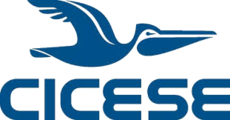Por favor, use este identificador para citar o enlazar este ítem:
http://cicese.repositorioinstitucional.mx/jspui/handle/1007/4240| Estructura, distribución y función de los protistas de la zona eufótica de las aguas oceánicas del golfo de México Structure, distribution and function of protists in the euphotic zone of the oceanic waters of the Gulf of Mexico | |
| KARLA SIDON CESEÑA | |
| María Asunción Lago Lestón | |
| Acceso Abierto | |
| Atribución | |
| Protistas, Golfo de México, 18S-ARNr, Ecosistema oligotrófico, Comunidad activa metabólicamente Protists, Gulf of Mexico, 18S-rRNA, Oligotrophic ecosystem, active community | |
| Los protistas son un grupo de microrganismos muy diverso, que, en condiciones limitadas de nutrientes, presentan interacciones entre ellos muy complejas. Estos microorganismos tienen múltiples funciones en la red alimenticia ya que, además de ser fotosintéticos, pueden ser heterótrofos, mixotróficos, parásitos y saprófitos, y son un vínculo esencial de la comunidad microbiana con niveles tróficos superiores. En el golfo de México (GdM), la corriente de Lazo se intensifica en verano y suministra a la cuenca aguas cálidas y oligotróficas. Sin embargo, los remolinos de mesoescala de tipo ciclónico crean condiciones favorables para la productividad biológica al llevar agua rica en nutrientes a la capa subsuperficial desde capas más profundas. Este estudio tuvo como objetivos principales: 1) determinar la estructura, variabilidad espacial y roles ecológicos de los protistas en la capa de mezcla (ML, por sus siglas en inglés mixed layer) y el máximo de fluorescencia (DCM) en la región oceánica del GdM, en verano y finales de primavera; y 2) evaluar la comunidad de protistas metabólicamente activa (ARN) y su actividad metabólica relativa (ADNr:ARNr) en el 100% de luz (SUR), el 0.1% de luz (PAR0.1) y en el DCM (entre 10 al 1% de luz PAR superficial) a finales de invierno, además de su interacción con la comunidad bacteriana. Para ello se analizaron datos procedentes de la secuenciación masiva de regiones hipervariables de los genes del ARN ribosomal y su posterior análisis bioinformático y estadístico. Entre los principales hallazgos se encontró que la comunidad de la ML estaba influenciada por la variabilidad temporal, regional y, en menor medida, por las estructuras de mesoescala, debido a la fuerte estratificación de verano. En contraste, solo las estructuras de mesoescala tuvieron un efecto sobre la variabilidad de la comunidad en DCM, como consecuencia del efecto de éstas sobre la profundidad de la nutriclina. Esta variabilidad se reflejó en la composición de especies en ambas profundidades. Alveolata representó ~60% de las lecturas en ambas profundidades, seguido de picoeucariotas heterótrofos MAST y Haptofitas en la ML y Pelagomonas (picoeucariotas fotosintéticas) y Rhizaria en DCM. Particularmente llamó la atención el aumento de Ostreococcus con la somerización de la nutriclina. Por su parte, en invierno, la comunidad metabólicamente activa reflejó las condiciones de mezcla. SUR y PAR0.1 mostraron comunidades muy diferentes, mientras que el DCM presentó Protists are a diverse group of microorganisms whose interactions are more complex under nutrient limited conditions. They play multiple roles in the food web, in addition to being photosynthetic; they can also be heterotrophic, mixotrophic, parasitic, and saprophytic, and are an important link between the microbial community and higher trophic levels. In the Gulf of Mexico (GoM), the Loop Current intensifies in summer and supplies the Gulf with warm oligotrophic waters. However, mesoscale cyclonic eddies within the Gulf of Mexico create favorable conditions for biological productivity by bringing nutrient-rich water to the subsurface from deeper layers. The main objectives of thies study were: 1) to determine the structure, variability, and ecological roles of protists in the mixing layer (ML) and the fluorescence maximum (DCM) in the oceanic region of the GoM during summer and late spring; and 2) to evaluate the metabolically active protist community (RNA) and its relative metabolic activity (rDNA:rRNA) in the 100% light (SUR), DCM (between 10 to 1% light), and 0. 1% light (PAR0.1) in late winter, together with their interactions with the bacterial community. To this end, data from massive sequencing of hypervariable regions of ribosomal RNA genes were analyzed, followed by bioinformatic and statistical analysis. The results indicated that the ML community was influenced by temporal, regional, and, to a lesser extent, mesoscale structures, attributable to strong summer stratification. Conversely, only mesoscale structures exerted an effect on DCM community variability as a consequence of their impact on nutricline depth. This variability was reflected in the species composition at both depths. Alveolata constituted approximately 60% of the readings at both depths, followed by heterotrophic picoeukaryotes MAST and Haptophytes at ML and Pelagomonas (photosynthetic picoeukaryotes) and Rhizaria in DCM. Particularly remarkable was the increase in Ostreococcus with nutricline shallowing. On the other hand, during the winter season, the metabolically active community reflected the prevailing mixing conditions. SUR and PAR0.1 exhibited markedly distinct communities, while DCM presented a composition comprising elements from both depths. A higher relative metabolic activity of photosynthetic protists was observed in the DCM, whereas heterotrophs showed an increased activity with depth, indicating the direct influence of depth on their ... | |
| CICESE | |
| 2024 | |
| Tesis de doctorado | |
| Español | |
| Sidón Ceseña, K. 2024. Estructura, distribución y función de los protistas de la zona eufótica de las aguas oceánicas del golfo de México. Tesis de Doctorado en Ciencias. Centro de Investigación Científica y de Educación Superior de Ensenada, Baja California. 99 pp. | |
| MICROBIOLOGÍA | |
| Aparece en las colecciones: | Tesis - Ciencias de la Vida |
Cargar archivos:
| Fichero | Descripción | Tamaño | Formato | |
|---|---|---|---|---|
| tesis_Karla Sidón Ceseña_2024.pdf | Descripción completa de la tesis | 4.12 MB | Adobe PDF | Visualizar/Abrir |
